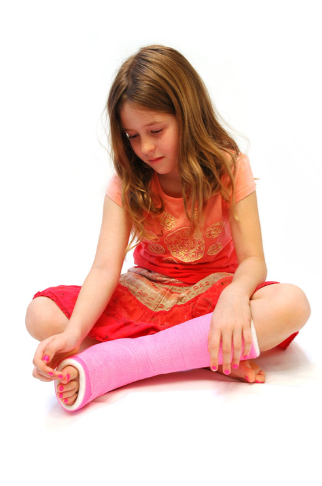To begin our series of Blogs on Injuries in the young athlete we are going to take an overall look at some common injuries that we see in active children and adolescents, we will take a deeper dive into these in future blogs.
Young athletes place large amounts of stress on growing bodies, over half of all injuries in children are due to overuse. This is particularly true in children who specialise in a single sport at an early age. Early specialisation in a single sport increases the risk of injury as well as the total time spent playing sport.
Lets take a look at some common injuries:
 Traction Apophysitis are injuries that can occur at numerous different areas around the body. It occurs when there is increased stress and irritation on the growth plate where a tendon attaches (the apophysis). The most common sites of traction apophysitis are at the top of the shin bone near the knee (Osgood Schlatters Disease), the bottom of the knee cap (Sinding Larsen Johansson Syndrome) and the heel (Sever’s Disease). But they can occur at many other locations around the body including the inside of the foot, groin and the inside of the elbow.
Traction Apophysitis are injuries that can occur at numerous different areas around the body. It occurs when there is increased stress and irritation on the growth plate where a tendon attaches (the apophysis). The most common sites of traction apophysitis are at the top of the shin bone near the knee (Osgood Schlatters Disease), the bottom of the knee cap (Sinding Larsen Johansson Syndrome) and the heel (Sever’s Disease). But they can occur at many other locations around the body including the inside of the foot, groin and the inside of the elbow.
- Patellofemoral pain – Patellofemoral pain syndrome (PFPS) is a term that describes pain that arises from around the kneecap (patella). It is one of the most common conditions that affects children and adolescents. It is more prevalent in females, affecting up to 10% adolescent girls.PFPS is characterised by gradual onset of pain and is aggravated by activities that load the patellofemoral joint such as climbing and descending stairs, squatting and sitting with prolonged knee flexion. However it is also common in children who don’t participate in high amounts of sports and exercise. Other symptoms include patella crepitus and giving way sensations.
- Spondylosis / Spondylolisthesis – this is a stress fracture that occurs in the vertebrae of the lower back. It is common in cricket fast bowlers and gymnastics, where there is a high amount of load going through a spine that is extended, flexed and rotated.
 ACL tears– ACL tears are most common in sports that involve twisting and pivoting including soccer, rugby, AFL, netball and touch football. They most commonly occur in a non-contact scenario where the athlete attempts to land, change direction or step an opponent. They can also occur during contact in sports such as rugby and AFL, however this is less common. As children are still developing and growing there are more risks with surgery such as growth plate arrest, leg-length discrepancy, or angular deformity and a higher risk of recurrent ACL tears (up to 30% more risk than skeletally mature adults). It is recommended to trial a conservative approach before rushing to surgery. However there are some scenarios where surgery is required. This should be managed by discussions with your physiotherapist and orthopaedic surgeon.
ACL tears– ACL tears are most common in sports that involve twisting and pivoting including soccer, rugby, AFL, netball and touch football. They most commonly occur in a non-contact scenario where the athlete attempts to land, change direction or step an opponent. They can also occur during contact in sports such as rugby and AFL, however this is less common. As children are still developing and growing there are more risks with surgery such as growth plate arrest, leg-length discrepancy, or angular deformity and a higher risk of recurrent ACL tears (up to 30% more risk than skeletally mature adults). It is recommended to trial a conservative approach before rushing to surgery. However there are some scenarios where surgery is required. This should be managed by discussions with your physiotherapist and orthopaedic surgeon.
- Shoulder Dislocations can occur for 2 reasons – traumatic and atraumatic. In a traumatic shoulder dislocation a large amount of force dislodges the arm bone from the shoulder joint, usually forward and downwards. The shoulder can relocate by itself, or may need a Dr’s assistance for it to go back in. After a traumatic shoulder dislocation you should always consult your Dr or physiotherapist.
Atraumatic shoulder dislocations are due to what we call multidirectional shoulder instability. This means that the connective tissue around the shoulder is naturally stretchy and doesn’t provide enough stability to keep the shoulder joint in place. In many instances the child can experience no pain when the joint is dislocated, however this is not good for the shoulder. Strengthening exercises and activity modification can help reduce and in some cases prevent this from occurring.
If you have any questions or would like to know more about these injuries give Pat a call 0487504175.



